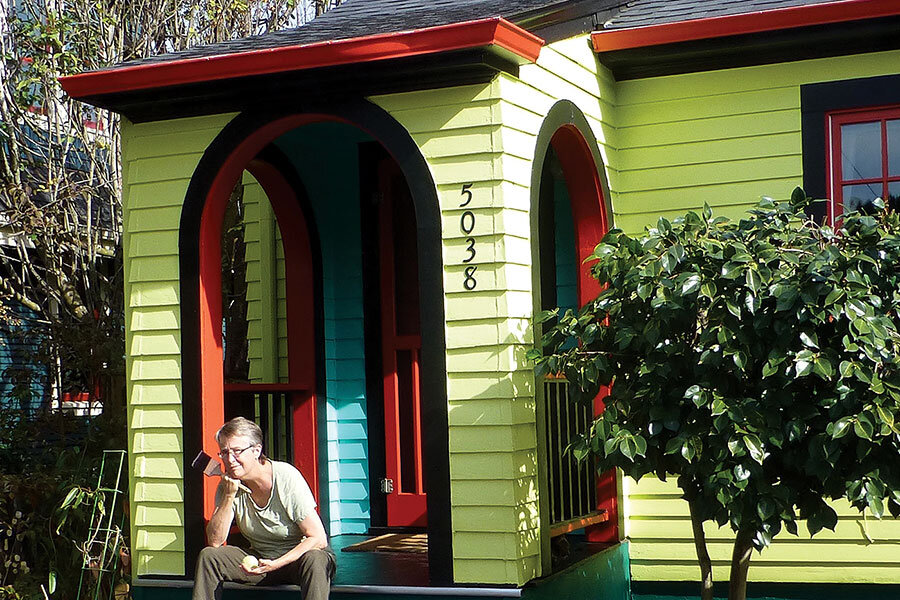Shades that shimmer, hues that cry
Loading...
When we first bought our house, there were only so many options for paint colors. You could have white – or green, yellow, gray, or blue, with white trim. Paint was not about making a statement.
Call us rebels, but we were determined to jazz things up. That meant three colors. Two of them were gray – and nobody but us needed to know that one of those was called “Fandango.” But then, all sly, we slid in a claret red. The neighborhood, correctly suspecting this might be a gateway color for eventual chromatic anarchy, arched a collective eyebrow and then went back to watching “Charlie’s Angels.”
We were emboldened. The next time we needed to paint, we threw caution to the winds and jewel tones on the clapboards. We bought several sample colors and tested them on a north wall. My husband laid in some malachite green and ruby red and then began to stroke on a strip of the teal blue that was all the rage at the time.
“Nope!” I hollered, standing back. “It’s not working.”
He kept painting.
“Stop! What are you doing?”
He sent an evil smirk over his shoulder. “This is just to scare the neighbors,” he said.
Nobody scares that easily anymore.
Forty years ago, the commercial street owed its ambiance to plywood, razor wire, and window bars. Now the shops try to out-art each other. Murals gallop down the alleys. People paint sunflowers and dragons right on the street. Our place, once considered daring, now looks like the home of the fuddy-duddies. I decided to paint our rental house, which is right next door, something a little brighter.
I knew I wasn’t going to get any grief from our neighbors to the south. Inside and out, their house is decked out in colors you could actually hear if their dog ever piped down. It’s grand. They come by it naturally; they’re celebrating their Cuban heritage. They even keep parrots. All I have for inspiration is the one cat in basic black. If I were going to come up with a thrilling paint scheme, I’d have to dig deep.
So I started with a rambunctious, retina-rocking chartreuse. It’s called “Always Lime,” and it would be fine if it really was always lime, but sometimes the sun hits it just right and it becomes “Atomic Blast Lemon.” If you tossed one of those neon tennis balls in front of it, a dog wouldn’t be able to track it.
Observers are either appalled or enthusiastic. I did get an early thumbs up from a pedestrian, lavishly tattooed. Other people strolled by shading their cellphones. A team of bicyclists in vivid spandex outfits briefly disappeared as they rolled past. Spiders quivered in their webs with all eight eyes squeezed shut.
So far, so good.
The “Black Leather” trim settled the Lime down nicely, so I revived the scheme with another trim in “Tomato Bisque” and anchored it all with a dark-green foundation, “Lincoln Park.” There’s still room on the porch for turquoise. It’s called “Jaded Janet.” We will assume Janet was the poor soul in charge of coming up with names for 150 increments between blue and green, and it had been a very long week for her.
I think it turned out well. The neighborhood is getting used to it – which is good, because the shipment of sequins should arrive any day.







